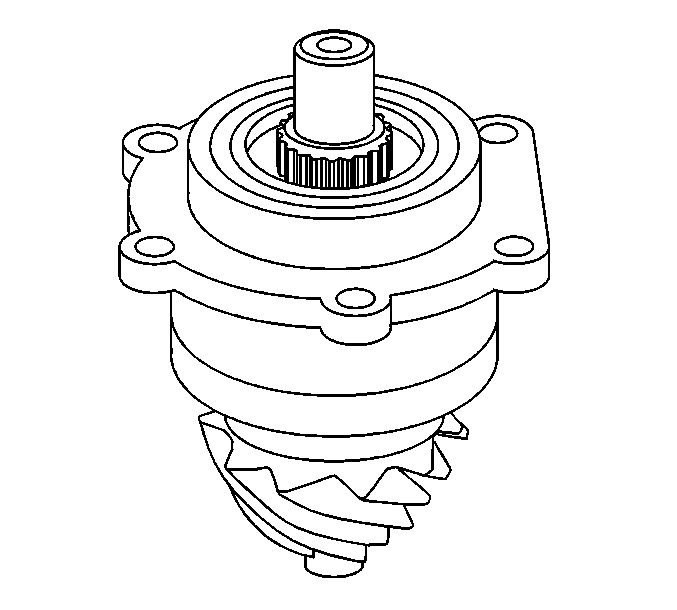Drive Pinion Bearings Replacement 8.6, 9.5 Inch Axle
Tools Required
| • | J 7818 Inner Bearing Race Installer (9.5 inch axle) |
| • | J 8092 Driver Handle |
| • | J 8608 Rear Pinion Bearing Race Installer (8.6 inch axle) |
| • | J 8611-01 Rear Pinion Bearing Race Installer (8.6 inch axle) |
| • | J 22306 Pinion Cup Bearing Installer -- Rear (9.5 inch axle) |
| • | J 22388 Rear Axle Pinion Oil Seal Installer (8.6 inch, 9.5 inch axle) |
| • | J 22912-B Split Plate Bearing Puller |
| • | J 24433 Pinion Cone and Side Bearing Installer (8.6 inch axle) |
| • | J 36614 Inner Pinion Bearing Installer (9.5 inch axle) |
Removal Procedure
- Raise the vehicle. Refer to Lifting and Jacking the Vehicle in General Information.
- Remove the tire and wheel assemblies. Refer to Tire and Wheel Removal and Installation in Tires and Wheels.
- Remove the brake calipers. Refer to Rear Brake Caliper Replacement in Disc Brakes.
- Remove the brake rotors. Refer to Rear Brake Rotor Replacement in Disc Brakes.
- Remove the axle shafts. Refer to Rear Axle Shaft Replacement .
- Remove the differential. Refer to Differential Replacement .
- Remove the pinion from the axle. Refer to Drive Pinion and Ring Gear Replacement .
- Press the bearing off of the pinion using theJ 22912-B .
- Remove the shim.
- Remove the pinion bearing cups from the axle housing using a hammer and a brass drift in the slots provided. Move the drift back and forth between one side of the cup and the other in order to work the cups out of the housing evenly.
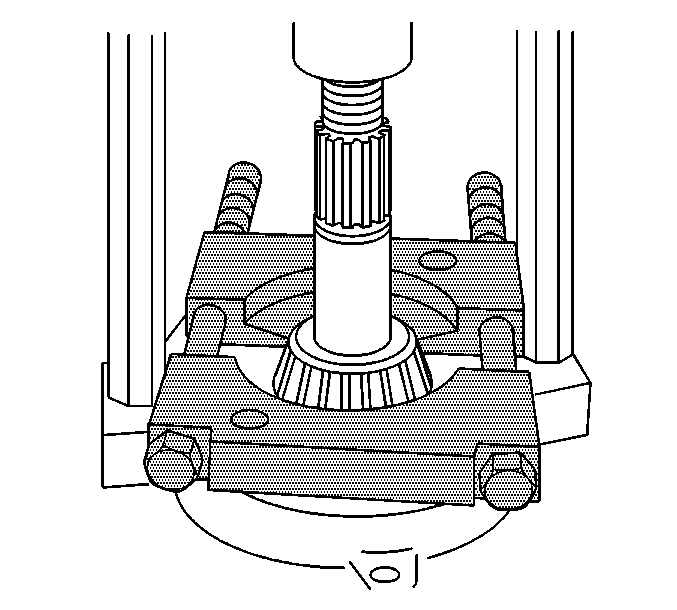
Installation Procedure
- Install the outer pinion bearing cup using the J 8611-01 (8.6 inch axle) (2), or the J 7818 (9.5 inch axle) (2), and the J 8092 (1).
- Install the inner pinion bearing cup using the J 8608 (8.6 inch axle) (2), or theJ 22306 (9.5 inch axle) (2), and the J 8092 (1).
- Determine the selective shim thickness for the pinion. Refer to Pinion Depth Adjustment .
- Install the selective shim between the inner pinion bearing and the shoulder on the gear.
- Install the inner pinion bearing using the J 24433 (8.6 inch axle), or the J 36614 (9.5 inch axle).
- Install a new collapsible spacer.
- Lubricate the pinion bearings with axle lubricant. Use the proper fluid. Refer to Fluid and Lubricant Recommendations in Maintenance and Lubrication.
- Install the pinion into the axle housing.
- Install the outer pinion bearing onto the pinion.
- Install a new pinion oil seal using the J 22388 .
- Apply sealant GM P/N 12346004, Canada P/N 10953480, or equivalent, to the splines of the pinion yoke.
- Install the pinion yoke.
- Seat the pinion yoke onto the pinion shaft by tapping it with a soft-faced hammer until a few pinion shaft threads show through the yoke.
- Install the washer and a new pinion nut.
- Install the J 8614-01 onto the pinion yoke as shown.
- Tighten the pinion nut while holding the J 8614-01 .
- Measure the rotating torque of the pinion using an inch-pound torque wrench.
- If the rotating torque measurement is below 1.0 N·m (10 lb in) for used bearings, or 1.7 N·m (15 lb in) for new bearings, continue to tighten the pinion nut.
- Once the specified torque is obtained, rotate the pinion several times to ensure the bearings have seated.
- Install the differential. Refer to Differential Replacement .
- Install the axle shafts. Refer to Rear Axle Shaft Replacement .
- Install the brake rotors. Refer to Rear Brake Rotor Replacement in Disc Brakes.
- Install the brake calipers. Refer to Rear Brake Caliper Replacement in Disc Brakes.
- Install the tire and wheel assemblies. Refer to Tire and Wheel Removal and Installation in Tires and Wheels.
- Fill the axle with lubricant. Use the proper fluid. Refer to Approximate Fluid Capacities and Fluid and Lubricant Recommendations in Maintenance and Lubrication.
- Lower the vehicle.
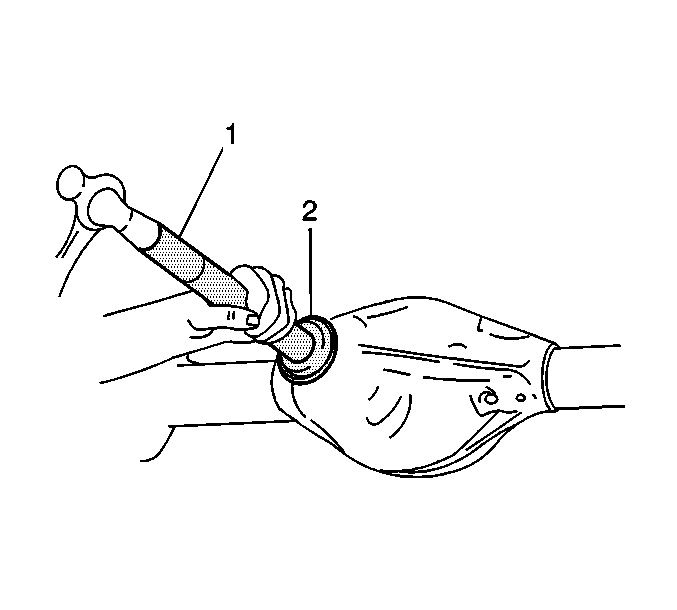
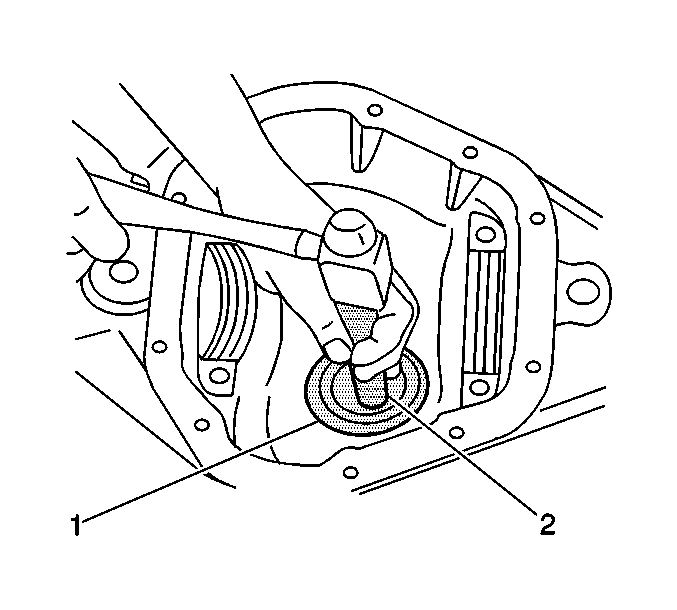
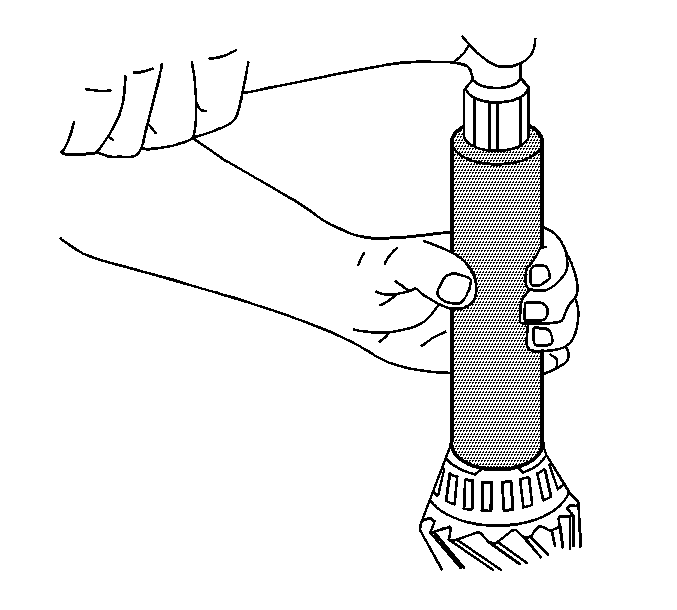
Press the bearing on until the cone seats on the pinion shim.
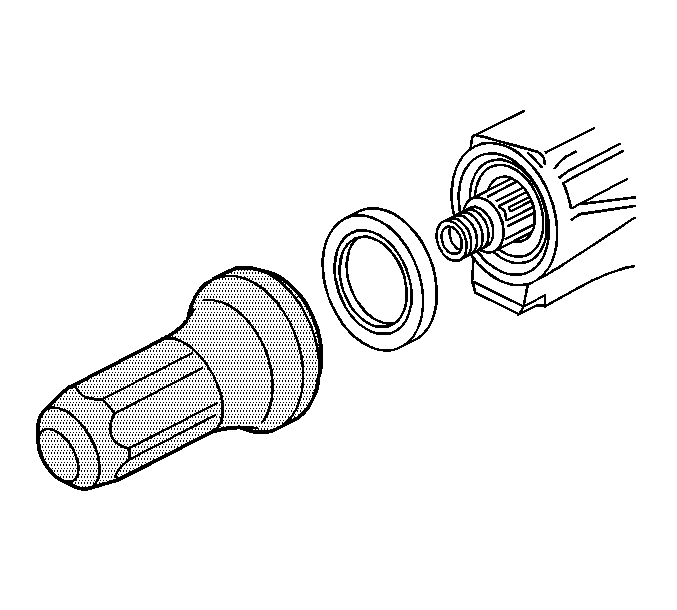
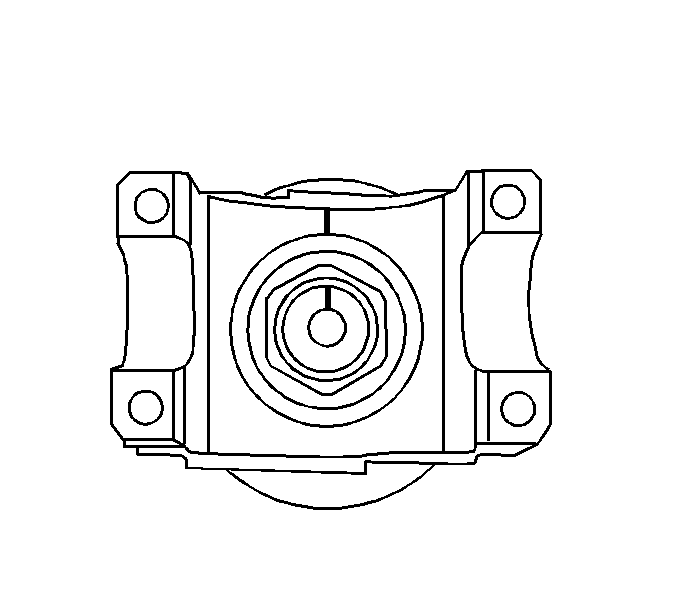
Align the marks made during removal.
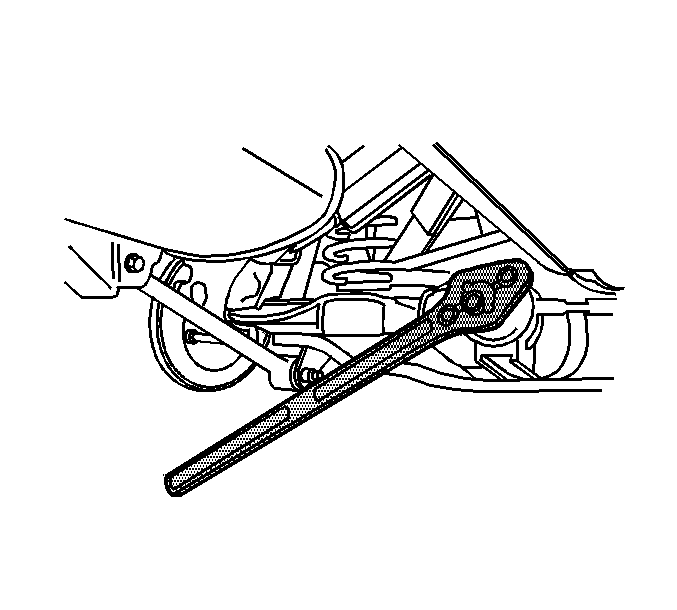
Notice: Refer to Fastener Notice in the Preface section.
Important: If the rotating torque is exceeded, the pinion will have to be removed and a new collapsible spacer installed.
Tighten
Tighten the pinion nut until the pinion end play is just taken up. Rotate
the pinion while tightening the nut to seat the bearings.
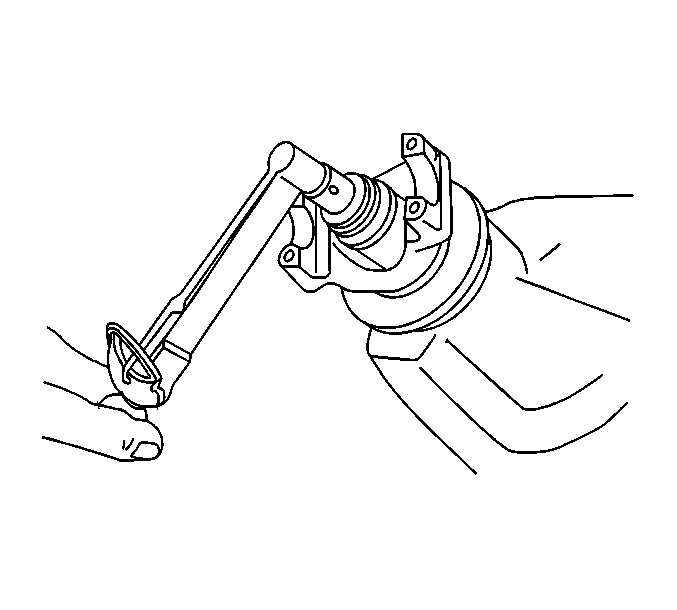
Specification
The rotating torque of the pinion should be between 1.0-2.8 N·m
(10-25 lb in) for used bearings, or 1.7-3.4 N·m (15-30 lb in)
for new bearings .
Tighten
Tighten the pinion nut, in small increments, as needed, until the torque required
in order to rotate the pinion is between 1.0-2.8 N·m (10-25 lb in)
for used bearings, or 1.7-3.4 N·m (15-30 lb in) for new
bearings.
Recheck the rotating torque and adjust if necessary.
Drive Pinion Bearings Replacement 10.5 Inch Axle
Tools Required
| • | J 22761 Differential Side Bearing Installer |
| • | J 22912-B Split Plate Bearing Puller |
| • | J 24433 Pinion Cone and Side Bearing Installer |
| • | J 37624 Pinon Bearing Installer |
| • | J 8092 Driver Handle |
| • | J 8608 Rear Pinion Bearing Installer |
Removal Procedure
- Raise the vehicle. Refer to Lifting and Jacking the Vehicle in General Information.
- Remove the differential assembly. Refer to Differential Replacement .
- Remove the pinion gear bearing retainer. Refer to Drive Pinion Housing and/or Seal Replacement .
- Remove the pinion yoke and the oil seal. Refer to Drive Pinion Housing and/or Seal Replacement .
- Remove the outer pinion bearing.
- Remove the pinion.
- Remove the collapsible spacer.
- Remove the inner pinion bearing from the pinion using the J 22912-B and a hydraulic press.
- Remove the outer pinion bearing cup using a hammer and a brass drift in the slots provided.
- Remove the inner pinion bearing cup using a hammer and a brass drift in the slots provided.
- Remove the pinion gear pilot bearing using a brass drift and a hammer.
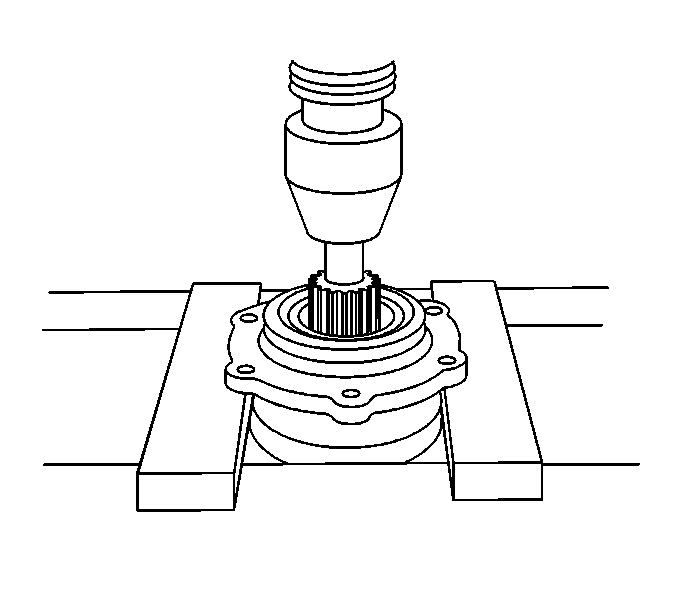
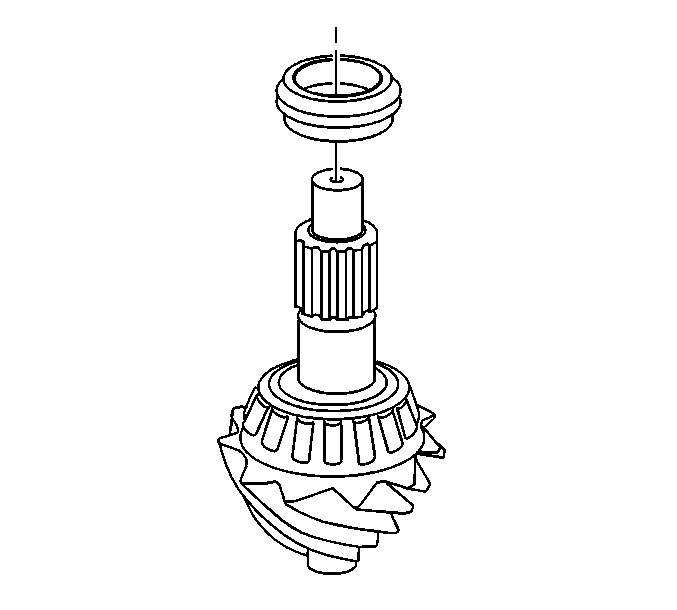


Move the drift back and forth between one side of the cup and the other in order to work the cups out of the retainer evenly.
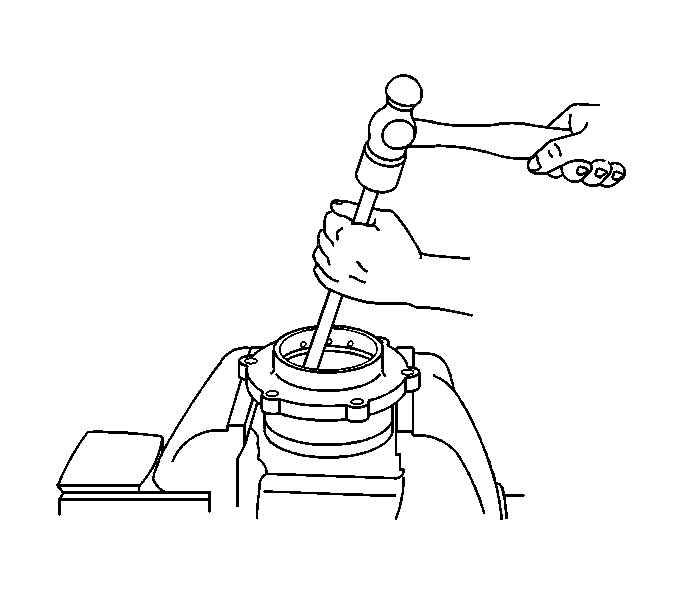
Move the drift back and forth between one side of the cup and the other in order to work the cups out of the retainer evenly.
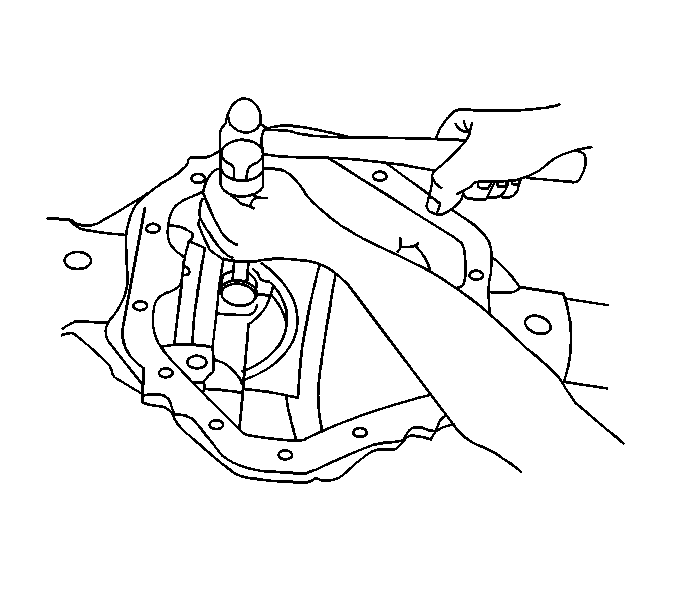
Installation Procedure
- Install the pinion gear pilot bearing using the J 22761 .
- Install the inner pinion bearing cup into the pinion gear bearing retainer using the J 37624 (2) and the J 8092 (1).
- Install the outer pinion bearing cup into the pinion gear bearing retainer using the J 8608 (2) and the J 8092 (1).
- Install the inner pinion bearing using the J 24433 .
- Install a new collapsible spacer.
- Lubricate the pinion bearings with axle lubricant. Use the proper fluid. Refer to Fluid and Lubricant Recommendations in Maintenance and Lubrication.
- Install the pinion into the pinion gear bearing retainer.
- Install the outer pinion bearing onto the pinion.
- Install the new pinion oil seal and the pinion yoke. Refer to Drive Pinion Housing and/or Seal Replacement .
- Install the pinion gear bearing retainer. Refer to Drive Pinion Housing and/or Seal Replacement .
- Install the differential assembly. Refer to Differential Replacement .
- Lower the vehicle.


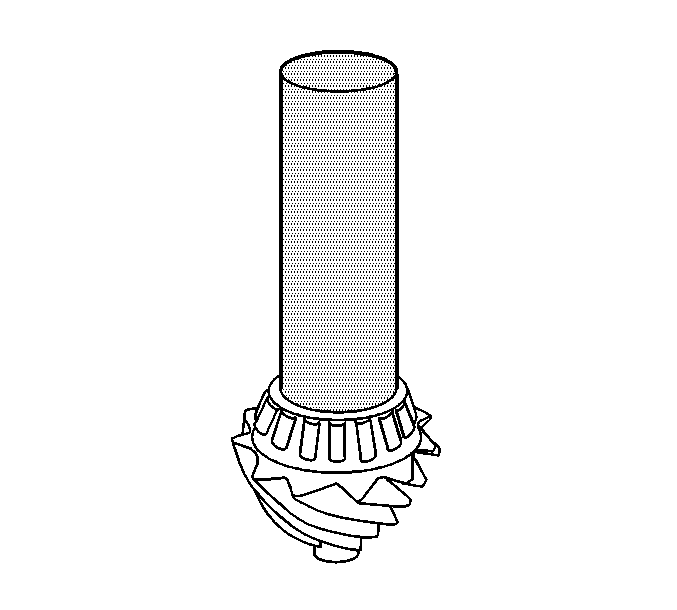
Press the bearing on until the cone seats on the pinion.
